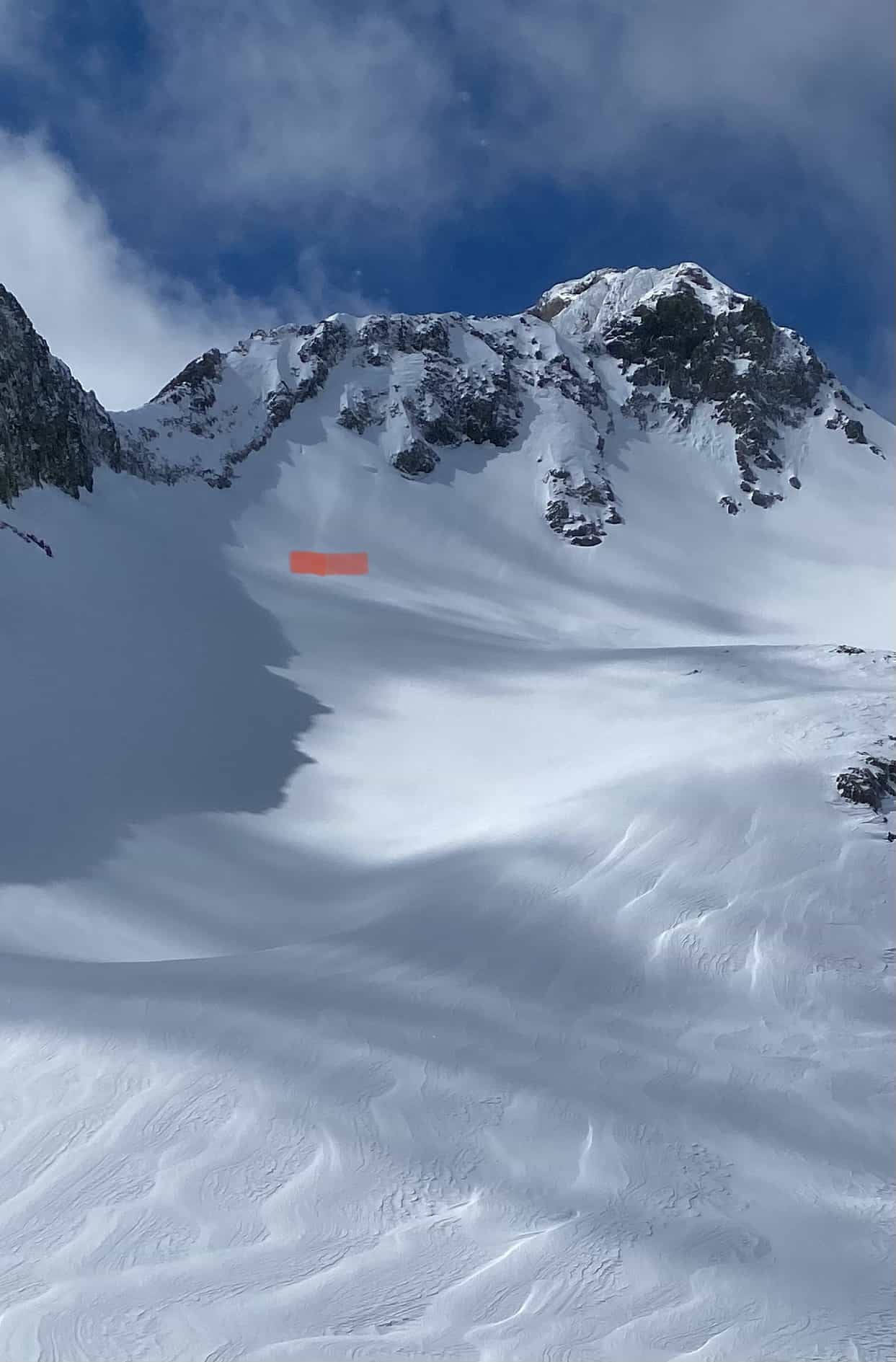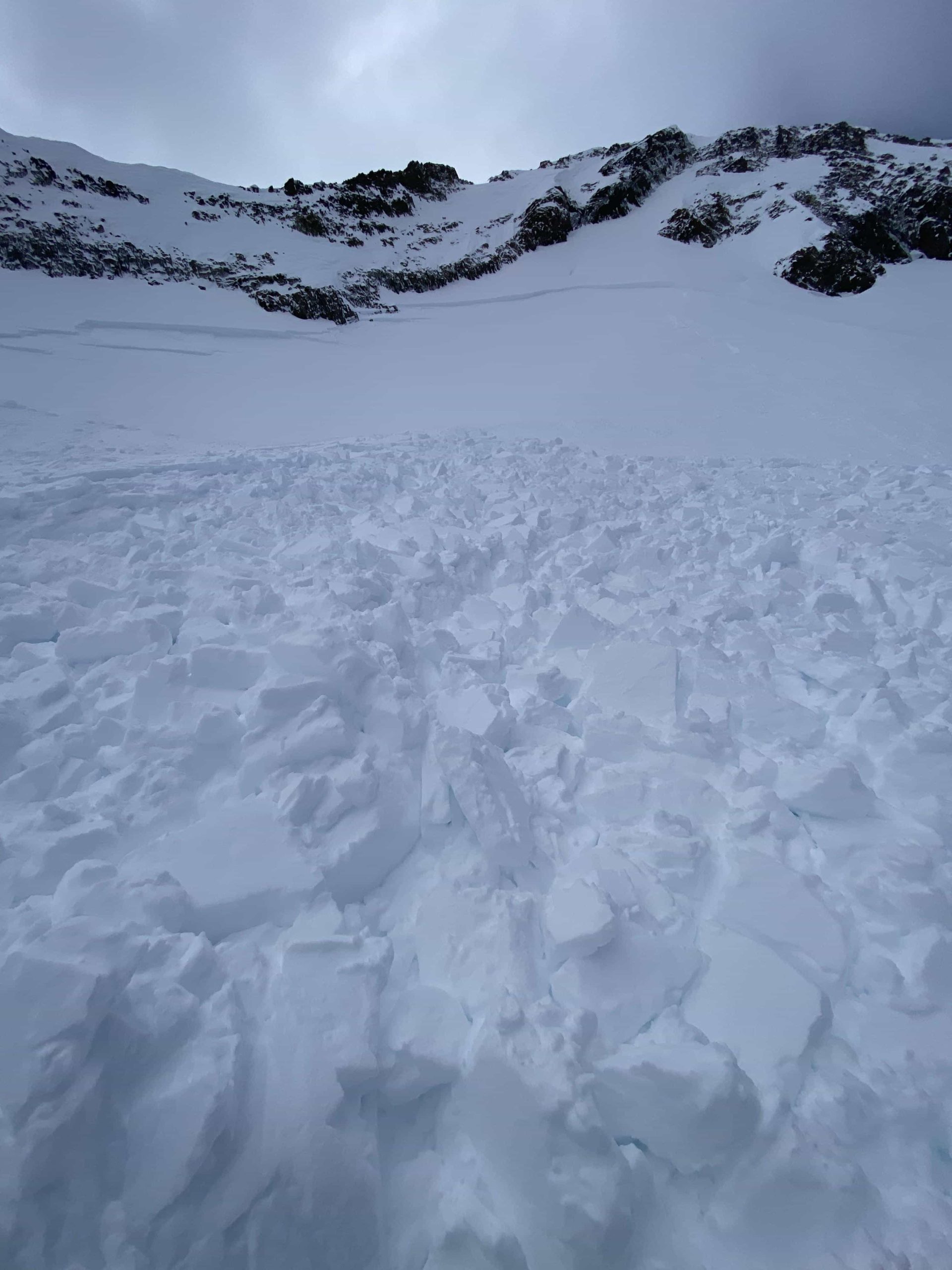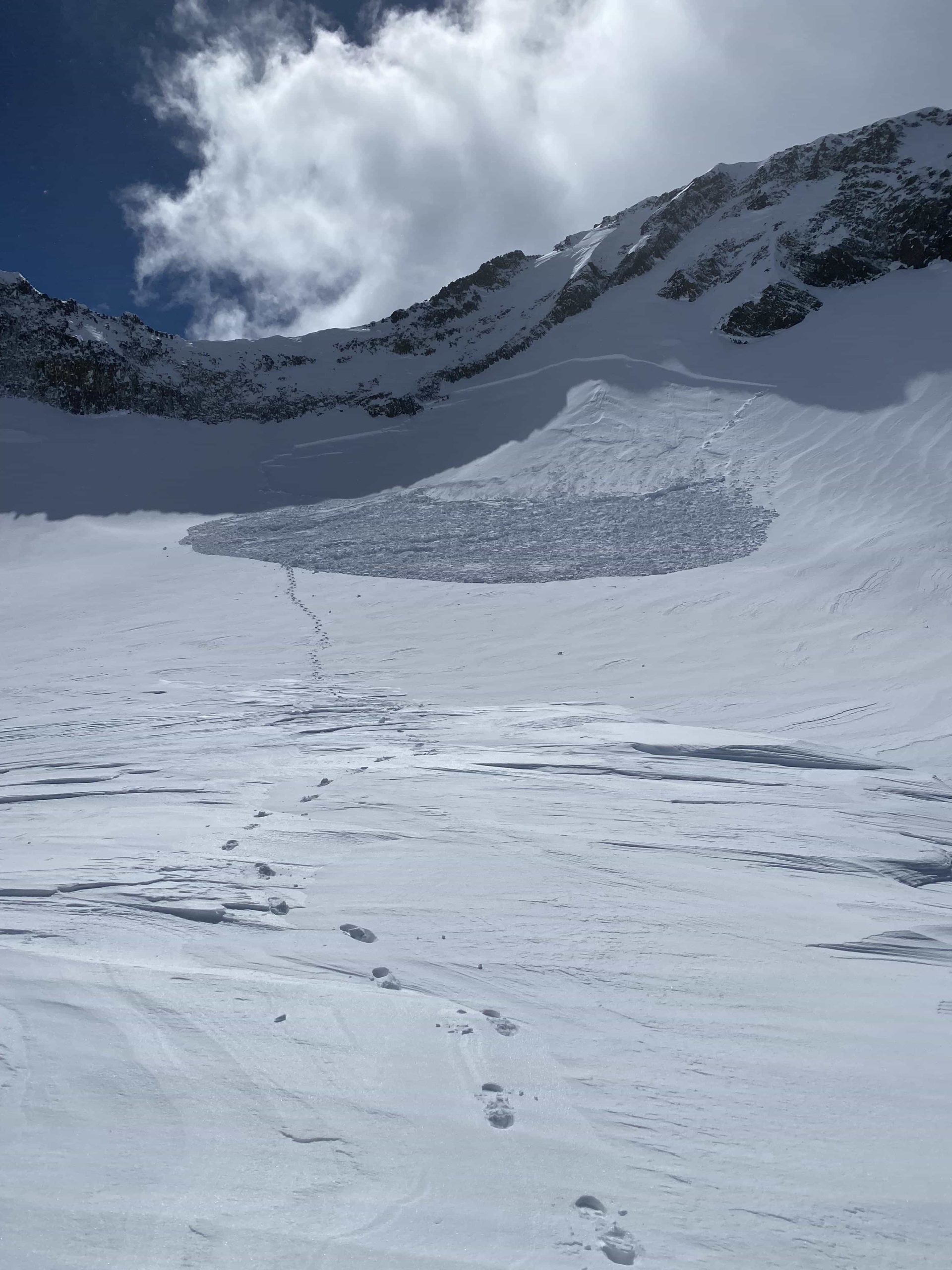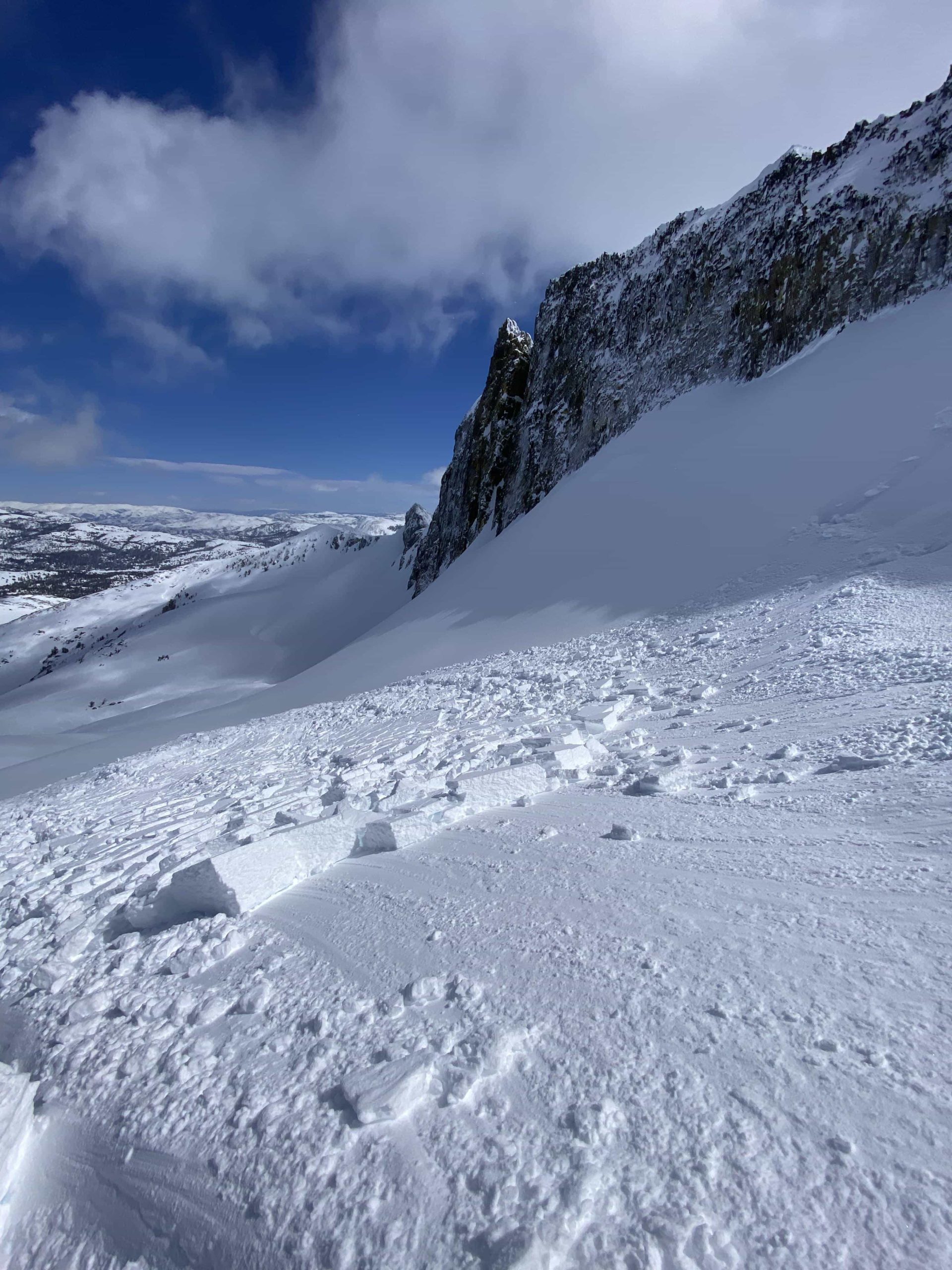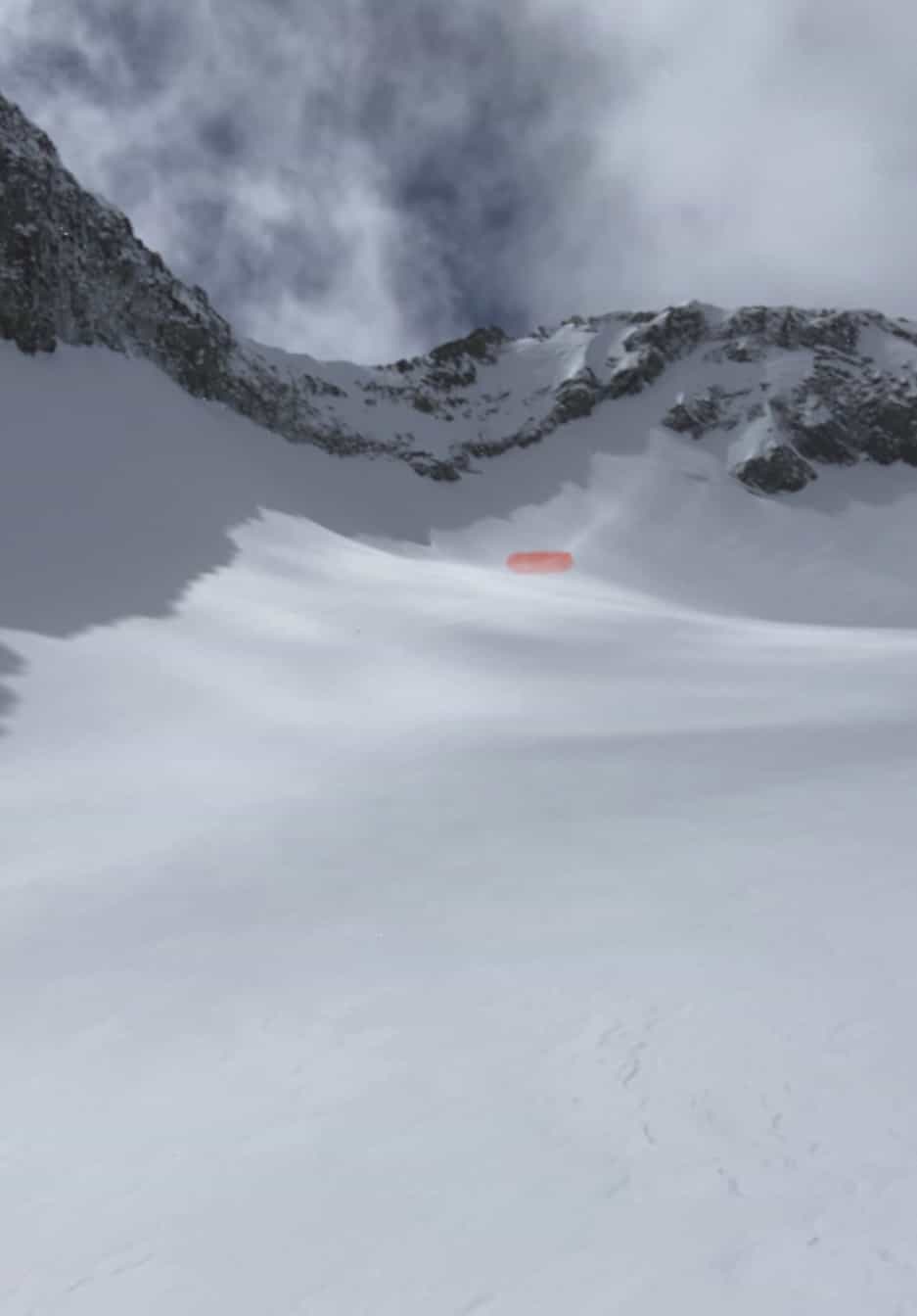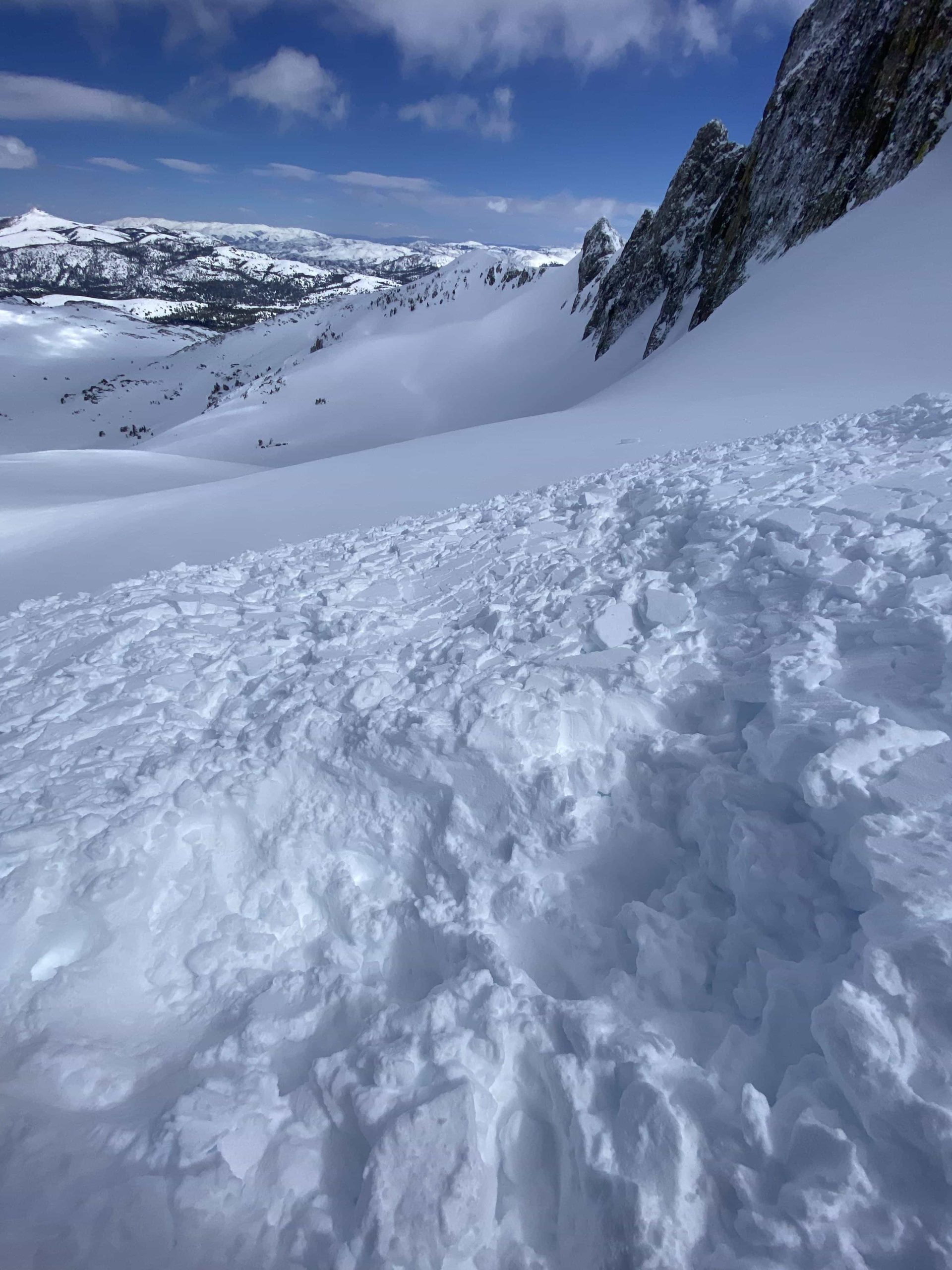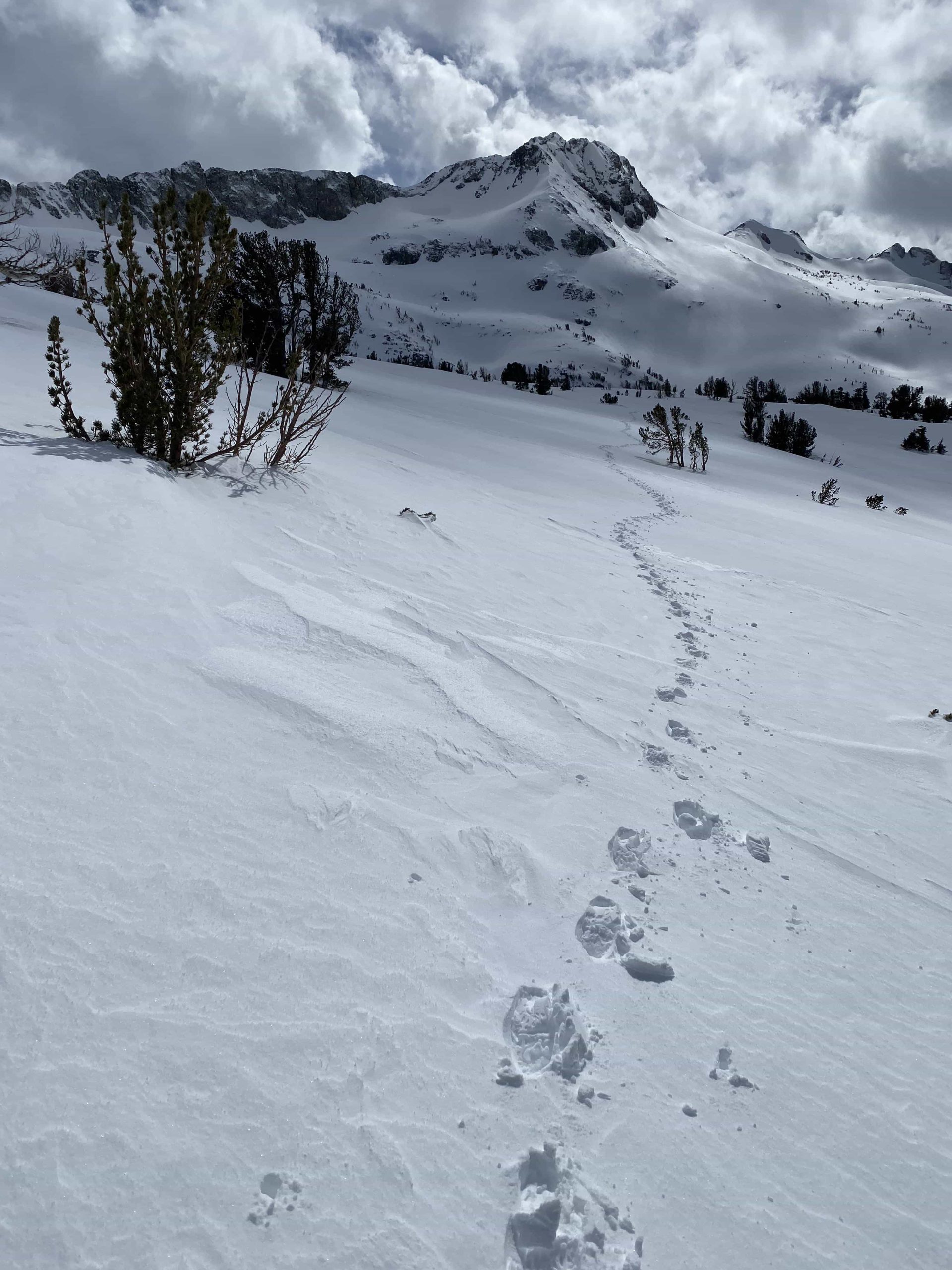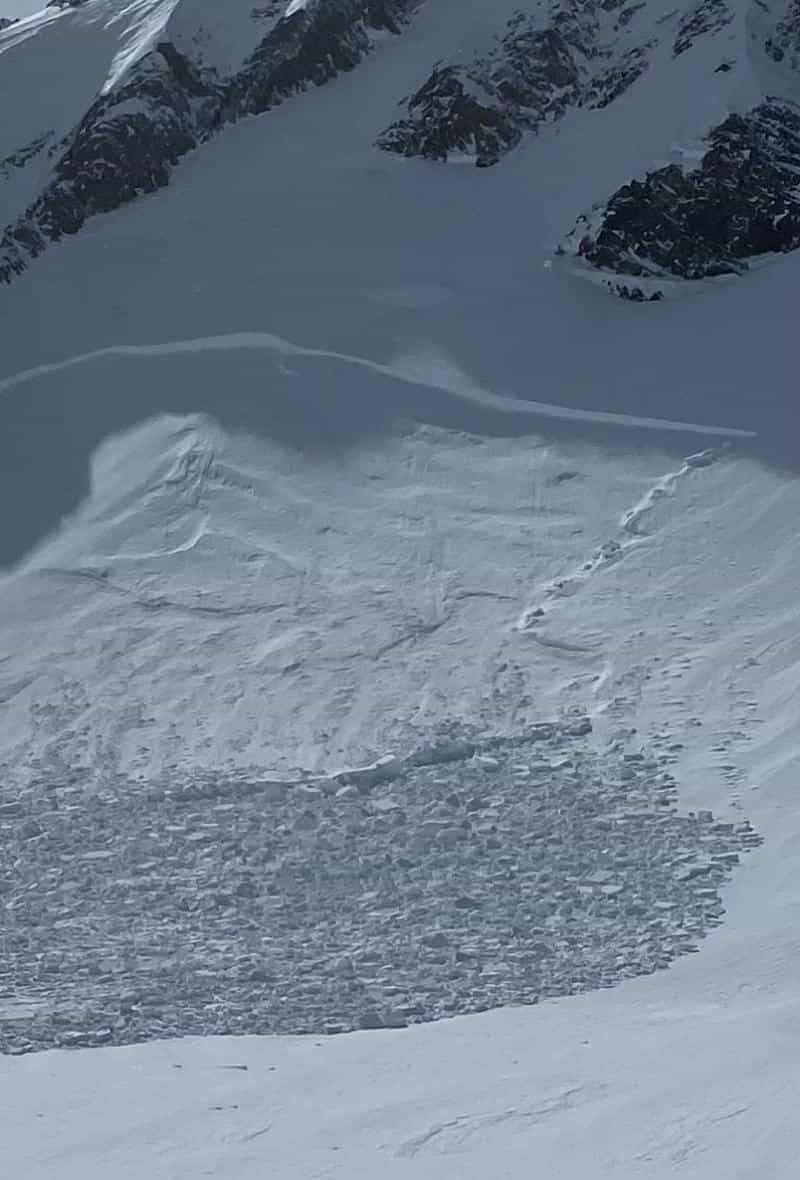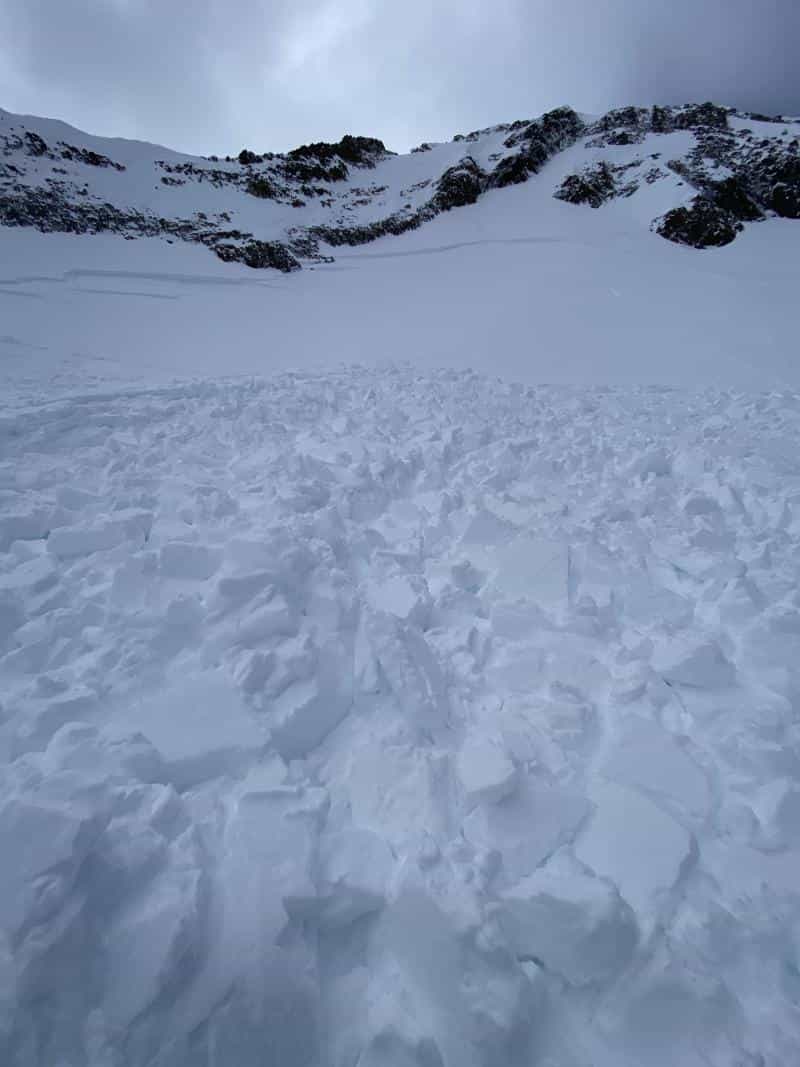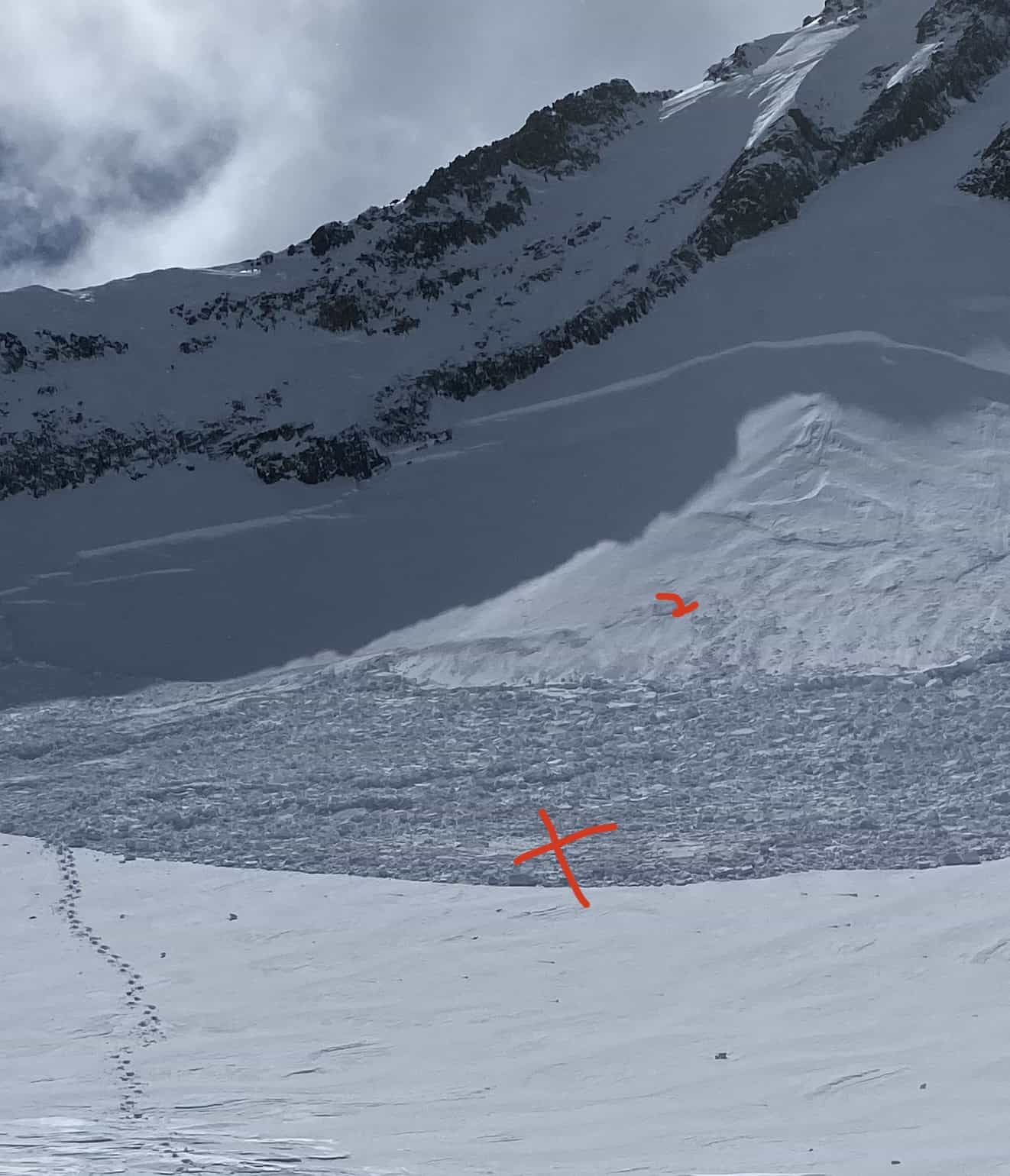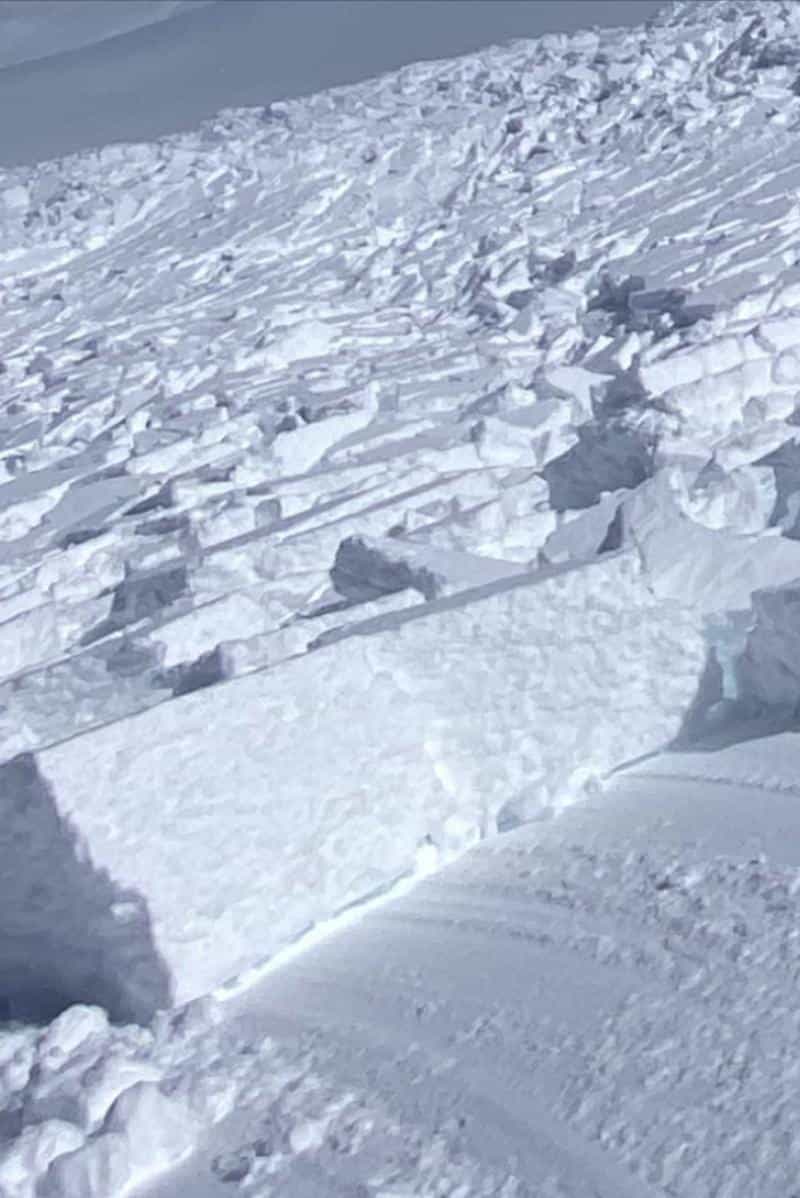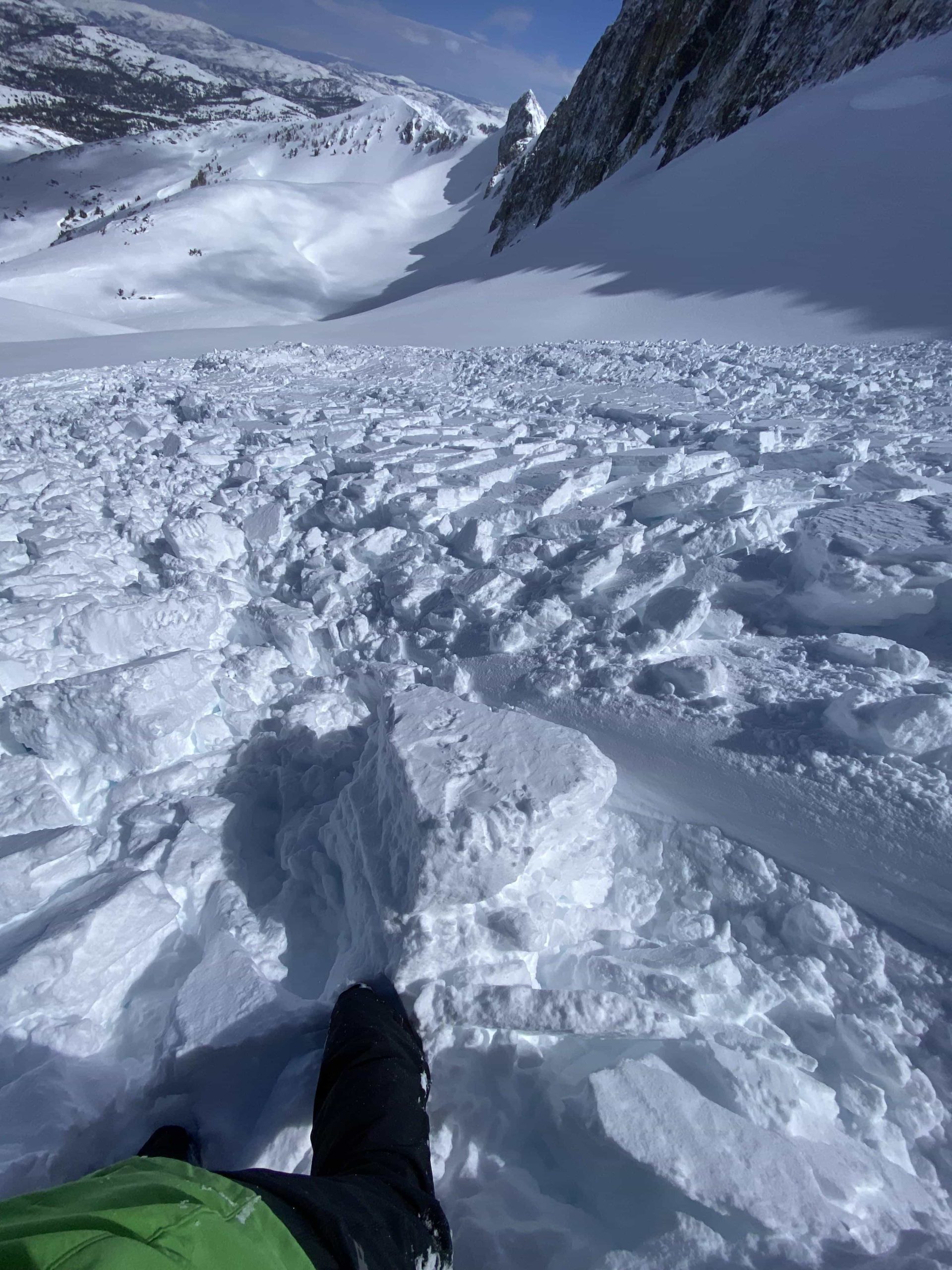
A backcountry skier feels “fortunate to be alive” after being caught and fully buried in an avalanche while traveling solo from Carson Pass towards Round Top peak, less than five miles east of Kirkwood Mountain Resort, CA, on Monday.
The skier, who submitted his observation to the Sierra Avalanche Center, was transitioning to downhill when the entire slope above him audibly cracked and released upon him. Swimming against 3-4 foot slabs, he quickly realized he was in a life or death situation and did everything in his power to ensure it was the former.
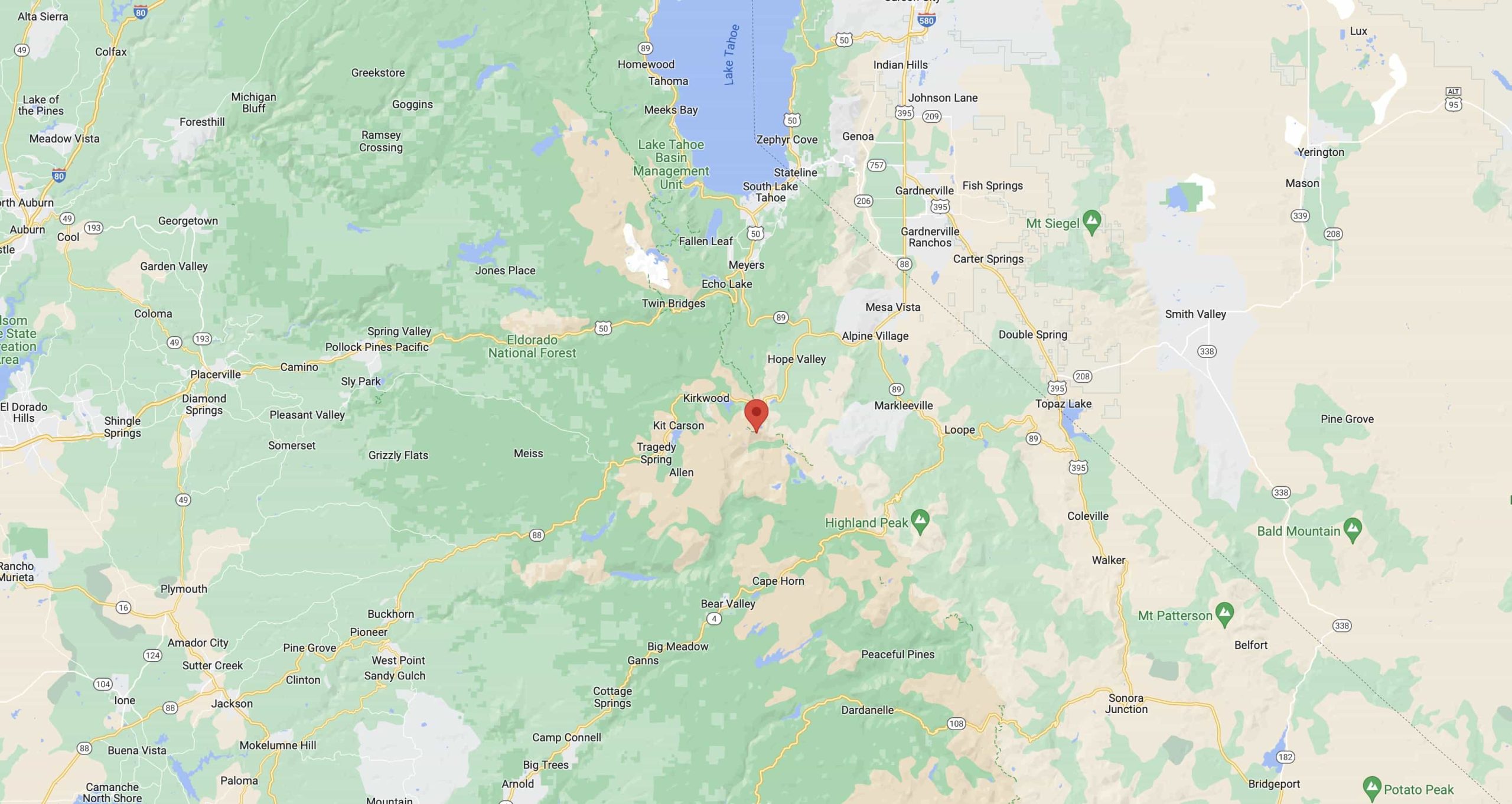
Read his terrifying report below:
Description of Snow, Weather, and Avalanche Conditions:
Toured solo from Carson Pass towards Round top peak. Traveling was easy with wind packed and firm snow surface almost the entire way to Lake Winnemucca. I traversed around the east side of the lake and linked a series of bowls and terraces below the Sierra crest and approaching the north east bowls of Round Top Peak. No avalanche activity or signs of instability were observed including during steeper uphill ski cuts while climbing. The snow was firm and chalky on the surface. Climbing up to the north east bowl on Round Top showed the same conditions. I stopped on low angle 20 degree terrain below the crest and steeper 35 degree slopes above me. I often like skiing these steeper slopes above but felt that was not safe with conditions and being solo.
I made a platform to transition with no signs of instability. I took off my pack, skis, and poles off and snapped pictures. Standing in boot deep snow, I pulled one skin off and I heard a crack as the entire slope above me released with 3-4 foot slabs hit my chest with significant force. I was immediately knocked down head first and face down into the avalanche. It was dark and the avalanche rode completely over me. I felt this was a life and death moment and fought with all my strength to survive. I struggled as hard as possible to push with my arms and legs against the avalanche. I was able to turn over to my face was facing up instead of down. I inhaled much snow but recall still being able to breath. I sensed I was going to soon stop so I used both hands to make a small gap around my mouth and nose. I perceived I was buried facing up and slightly on my side with my head down hill but higher that my body. At this time I was fully buried and I focused on breathing. The snow in my esophagus burned but I was able to take 20 deep breaths and control my heart rate. The snow weight was compressing my chest and body but I did not detect injuries. After a brief period, I was able to move my right arm enough to begin digging. This brought more snow on my face but felt motivated to get my arm more space. At this point, more light came to my eyes and my hand pierced above the avalanche surface. I cleared my face again and laid still for some time breathing. I used my right hand to free my other arm and I was able to sit up with my head above the slide surface. I extracted my self slowly through slab and chunks. Self evaluation confirmed no injuries and I continued to cough up snow.
I assessed the area and felt it was safe to climb up to where I was standing when the slide hit me to look for my skis and pack. I spent 15 -20 minutes looking and saw no sign of my gear. It was now 14:30 and I had no food, water, layers, tools, or gear. I was happy to be alive and uninjured. I’ve skiied over 50 days this year and felt strong. I did have my car keys and my phone and a light soft shell and gloves. My gear is currently buried at the site.
I decided to first descend to the western spillway of Lake Winnemucca, staying on wind scoured areas. Travel was better than expected and I found two pine branches to use as poles. I crossed the spillway and continued post-holing towards the wind scoured slopes west of Elephants back to stay on firmer snow. I got a cell signal and contacted my wife. At this time, I was confident I would make it back to Carson pass. I made it back to my car at 17:30 after significant effort descending from 10,000 ft. I started my car and drove away.
The biggest mistake I made was transitioning just below the steep slopes above my platform. I’ve skied this line dozens of times over 30 years in similar conditions. There was no signs of avalanche and yet, the conditions on March 20, 2023 were the perfect trap. The kind of situation that kills people who believe they are skilled enough to predict avalanche risk.
I’m fortunate to be alive.
Snowpack Details
- Total Snow Depth: 120cm
- Persistent Weak Layers: Buried
Avalanche Details
- Avalanche Type: Storm Slab
- Failure Plane/Weak Layer: New/old snow interface
Trigger
- Trigger: Skier
- Trigger Modifier: Accidentally Triggered
Terrain
- Start Zone Slope Angle: 35degrees
- Aspect: Northeast
- Starting Elevation: above-treeline
Size
- Destructive Size: D2 Could bury, injure, or kill a person.
- Relative Size: R2 Small
- Crown Height: 4 ft
- Avalanche Width (Average width): 500ft.
- Avalanche Length (Vertical Run): 700ft.
People Involved
- Number of people caught: 1
- Number of partial burials: 0
- Number of full burials: 1
Photos:
(all images courtesy of the Sierra Avalanche Center)
